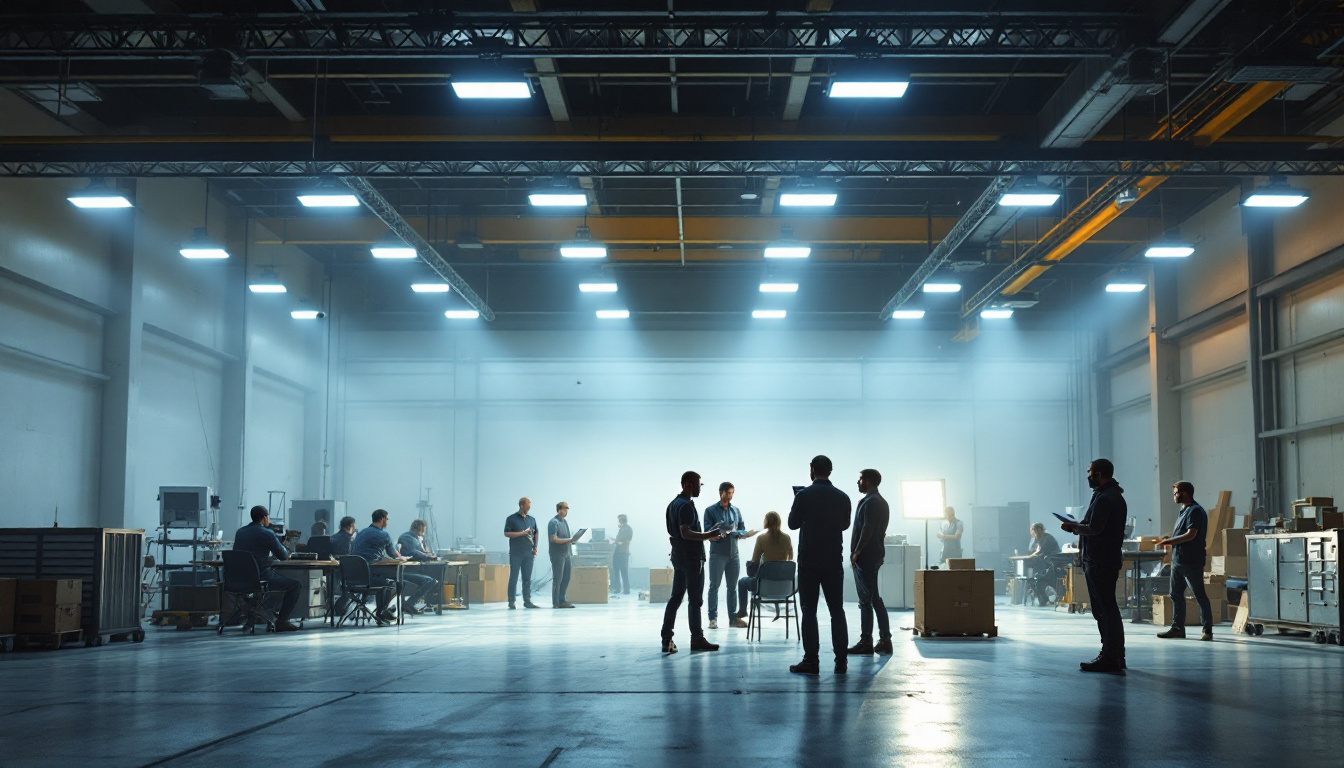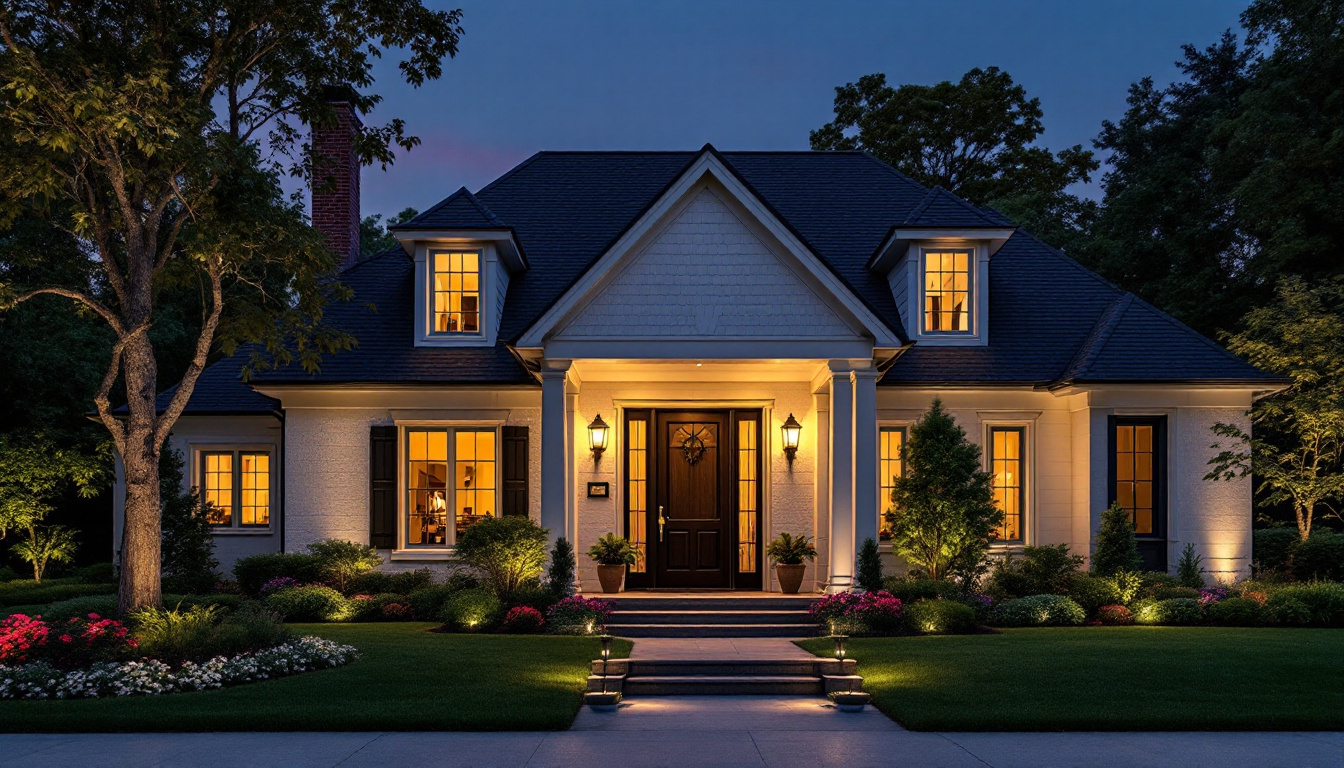

Metal halide fixtures have long been a popular choice for commercial and industrial lighting due to their high efficiency and excellent color rendering capabilities. However, despite their advantages, many lighting contractors often make common mistakes when selecting, installing, or maintaining these fixtures. Understanding these pitfalls can help improve project outcomes, enhance customer satisfaction, and ultimately lead to better business performance.
Before diving into the common mistakes, it’s essential to grasp the fundamentals of metal halide technology. Metal halide lamps produce light by passing an electric current through a gas mixture, which includes metal halides. This process results in a bright, white light that is ideal for various applications, from street lighting to sports arenas. The spectrum of light emitted by these lamps is particularly valued for its ability to render colors accurately, making them a popular choice in settings where color discrimination is critical, such as art galleries and retail spaces.
The efficiency and color quality of metal halide fixtures make them an attractive option, but they also require careful consideration during installation and maintenance. A solid understanding of their operation can help contractors avoid critical errors that may compromise performance. Additionally, metal halide lamps have a longer lifespan compared to traditional incandescent bulbs, which can lead to lower replacement costs over time. However, their performance can degrade if not maintained properly, emphasizing the need for regular inspections and timely replacements to ensure optimal functionality.
One of the most significant mistakes lighting contractors make is selecting the wrong metal halide fixture for a specific application. Each environment has unique lighting needs, and failing to assess these requirements can lead to inadequate illumination or excessive energy consumption. The type of reflector used in the fixture can also influence the light output and distribution, which is why understanding the specific requirements of the space is paramount.
For instance, using a fixture with a higher wattage than necessary can result in over-lighting, leading to glare and discomfort for occupants. Conversely, under-lighting can create safety hazards and reduce productivity in work environments. Therefore, conducting a thorough lighting assessment before choosing a fixture is crucial. This assessment should include evaluating the layout of the space, the tasks being performed, and the preferences of the occupants. Engaging with end-users can provide valuable insights that inform the selection process, ensuring that the chosen fixtures meet both functional and aesthetic needs.
Another common mistake is neglecting proper fixture placement. The positioning of metal halide fixtures significantly impacts their effectiveness. Contractors often overlook factors such as beam angle, mounting height, and spacing between fixtures. These elements play a vital role in achieving uniform light distribution and minimizing shadows. Proper placement not only enhances visibility but also contributes to energy efficiency by ensuring that light is directed where it is most needed.
For example, in a warehouse setting, placing fixtures too far apart can create dark spots, while placing them too close can lead to excessive brightness in certain areas. Utilizing lighting design software can help visualize the layout and optimize fixture placement for better results. Additionally, considering the potential for future changes in the space, such as rearranging equipment or altering workflows, can inform a more flexible lighting design. This foresight can save time and resources in the long run, as it reduces the need for frequent adjustments or replacements of fixtures.
Installation is a critical phase in the lifecycle of metal halide fixtures. Mistakes made during this stage can lead to functionality issues, safety hazards, and increased maintenance costs. Here are some common installation errors that contractors should be aware of.
Wiring mistakes are among the most frequent errors encountered during the installation of metal halide fixtures. Incorrect wiring can lead to flickering lights, reduced lifespan of the lamp, or even complete fixture failure. It’s essential to follow the manufacturer’s wiring diagrams and local electrical codes to ensure safety and compliance.
Additionally, using the wrong gauge of wire can result in voltage drops, which may affect the performance of the fixture. Contractors should always verify that the wiring is appropriate for the fixture’s wattage and distance from the power source. Furthermore, it’s advisable to conduct a thorough inspection of all connections before powering on the system. Loose connections can create heat build-up, which not only shortens the lifespan of the fixture but also poses a fire risk. Regular training sessions on wiring best practices can help contractors stay updated on the latest techniques and safety measures.
Safety should always be a top priority during installation. Unfortunately, some contractors may rush through the process or overlook essential safety protocols, leading to dangerous situations. For instance, failing to properly secure fixtures can result in them falling and causing injury or damage.
Moreover, not using personal protective equipment (PPE) during installation can expose contractors to electrical hazards. Adhering to safety guidelines and ensuring that all team members are trained in safe installation practices can mitigate these risks. It’s also important to conduct a risk assessment of the installation site prior to beginning work. This assessment should identify potential hazards such as overhead power lines, unstable surfaces, or inadequate lighting conditions. By addressing these issues upfront, contractors can create a safer working environment, ultimately leading to a more efficient installation process. Additionally, implementing a checklist for safety measures can help ensure that no critical steps are overlooked, fostering a culture of safety within the team.
Once metal halide fixtures are installed, regular maintenance is crucial for ensuring their longevity and performance. However, many contractors neglect this aspect, leading to various issues that could have been easily avoided.
Dust, dirt, and debris can accumulate on metal halide fixtures over time, significantly reducing their light output. Contractors often forget to include regular cleaning in their maintenance schedules, resulting in diminished performance and increased energy costs.
Implementing a routine cleaning schedule can help maintain optimal light levels and extend the lifespan of the fixtures. Using appropriate cleaning methods and materials is also essential to avoid damaging the fixtures.
Metal halide lamps have a limited lifespan, typically ranging from 10,000 to 20,000 hours, depending on the specific type and usage conditions. Contractors often overlook the importance of tracking lamp replacement cycles, which can lead to unexpected outages and reduced light quality.
Establishing a proactive replacement schedule based on usage patterns can help ensure that lamps are replaced before they fail. This approach not only maintains consistent lighting levels but also enhances customer satisfaction.
Energy efficiency is a critical factor in the selection and use of metal halide fixtures. Many contractors make mistakes that can lead to unnecessary energy consumption, impacting both operational costs and environmental sustainability.
With advancements in lighting technology, various energy-saving options are available for metal halide fixtures. However, some contractors may stick to traditional fixtures without considering newer alternatives, such as LED retrofits or high-efficiency models.
These options can significantly reduce energy consumption while providing the same or better light quality. Contractors should stay informed about the latest developments in lighting technology to offer clients the most efficient solutions.
Another common oversight is failing to incorporate lighting controls and automation systems. These technologies can optimize energy use by adjusting light levels based on occupancy or natural light availability. Unfortunately, many contractors do not discuss these options with clients, missing an opportunity to enhance energy efficiency.
Integrating controls can lead to substantial energy savings and improve the overall functionality of the lighting system. Educating clients about the benefits of these technologies can also help contractors differentiate themselves in a competitive market.
Compliance with local codes and regulations is a crucial aspect of any lighting project. However, many contractors make mistakes that can lead to violations, resulting in costly fines and project delays.
Each locality has specific codes and regulations governing lighting installations. Contractors who do not take the time to understand these requirements may inadvertently violate them, leading to compliance issues. This oversight can result in rework, fines, or even legal action.
It is essential for contractors to stay updated on local codes and ensure that all installations meet these standards. Consulting with local authorities or industry associations can provide valuable insights into compliance requirements.
In addition to understanding codes, contractors must also be aware of permitting requirements for lighting installations. Some projects may require specific permits before work can commence. Failing to obtain the necessary permits can lead to project delays and additional costs.
Contractors should always verify the permitting process for their projects and ensure that all required documentation is submitted in a timely manner. This diligence can help avoid complications and keep projects on schedule.
Metal halide fixtures offer excellent lighting solutions for various applications, but common mistakes in selection, installation, maintenance, energy efficiency, and compliance can undermine their effectiveness. By understanding these pitfalls and taking proactive measures to avoid them, lighting contractors can enhance their project outcomes and ensure client satisfaction.
Investing time in proper training, staying informed about industry developments, and adhering to best practices can significantly improve the quality of lighting installations. Ultimately, avoiding these common mistakes not only benefits contractors but also leads to more successful and sustainable lighting projects.
Don’t let common mistakes in metal halide fixture applications hinder your project’s success. Choose LumenWholesale for your lighting needs and benefit from our spec-grade products that promise quality and reliability. With our competitive wholesale pricing and the convenience of free shipping on bulk orders, you can ensure your installations are not only effective but also cost-efficient. Elevate your lighting projects with the confidence that comes from using industry-standard products. Make the smart choice and explore our collection for Wholesale Lighting at the Best Value today.

Discover the ultimate guide to selecting the best high bay lights and effectively training your team in lighting solutions.

Discover how LED light kits can transform your lighting solutions with energy efficiency, versatility, and enhanced ambiance.

Discover the essential insights every lighting contractor needs to know about exterior house lights.

Discover expert insights from top lighting contractors on the latest trends, technologies, and strategies in commercial lighting.
Get notified when NEW deals are released.
Optimize your budget with wholesale discounts.
Only top-quality, specification-grade lighting products.
No additional costs at checkout - what you see is what you pay.
We understand the unique needs of contractors.